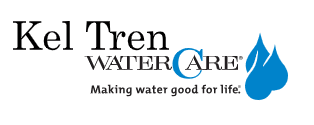Did you know that according to the U.S. Geological Survey, about 85 percent of American households have hard water, including homes with both city water and well water? That means that 85 percent of households deal with things like lower water pressure, inefficient appliances, and calcium buildup in pipes.
However, there’s no need to worry about these problems when a simple solution exists. Hard water can be fixed via water softener installation — in fact, a water softener is the only true way to eliminate mineral buildup in your household’s water supply. So, what is a water softener, and how do they work? Read on to discover more information about these stupendous systems!
What Is Hard Water?
Let’s start at the beginning of the problem: do we even understand what hard water is? If you never had a water softener in your home, you may not even realize that you are living every day with “hard water.” Hard water sounds odd, doesn’t it? How can water be hard? Well, the term hardness means that your water is full of minerals that can stick to anything that they touch, such as your pipes, your water heater, your dishwasher, and even your body.
Some issues are more of an irritant rather than problematic for your home. These issues include things like dry skin, your laundry may not be as bright in color, or shampoo doesn’t lather up very well. While these things are certainly a pain, they may not drive you to go out and buy a softener today.
Then some issues occur because of hard water that is problematic for your home and can cause serious long-term damage. As water runs through your pipes, the hard water hits showerheads, icemakers, washing machines, water heaters, boilers, and dishwashers. Hard water leaves behind hard, crusty mineral deposits. At first, these small deposits may be visually displeasing but are harmless, but over time they build up and eventually clog pipes, seize valves, plug shower heads, and more. In extreme cases, hard-water deposits can dramatically restrict the water flow, which puts undue pressure on the whole plumbing system. The deposits also build up in places like your water heater shortening the life span of that appliance and others.
For people who rely on hard water for cooking, cleaning, and bathing, water softeners serve a vital purpose. A water softener saves you from replacing prematurely ruined water heaters, scaly faucet heads, and hours and hours of cleaning up soapy residue. Investing in a water softener saves you time, energy, and money and protects your home and your property.
What Is a Water Softener?
At its core, a water softener can be explained in one sentence: A water softener is a whole-house filtration system that removes hardness-causing calcium and magnesium minerals from your water through a process called ion exchange. But does anyone who doesn’t work in the water treatment industry understand what that sentence actually means? I didn’t think so.
Water softeners come in a variety of sizes and styles to accommodate the size of your home and family. The softener is installed in the basement, garage, utility closet, or wherever water enters the house. At Kel Tren WaterCare, our standard water softener is a style called the CareSoft Pro Water Softener. There are a few main components that make up a water softener, the first is the large skinny fiberglass tank. This tank comes in a variety of sizes that we adjust based on the quality of your water, the amount of water being used, and the size of the house.
What’s Inside a Water Softener Tank?
Wondering what’s inside a water softener tank? We’re here to give you an “inside look!” Inside a typical water softener tank is a resin that performs the ion exchange process. Water softeners also have a separate tank that sits beside the resin tank called the “brine tank.” This tank is vital in the water softening process (in order to keep an adequate level of softening salts in your water softening system, you will need periodic salt delivery).
How Does a Water Softener Work?
The next question you may be asking is, “how does a water softener work?” Here’s the short version of a relatively complex process: As water moves through the large resin tank, the resin beads attract the positively charged minerals in the water (a process known as ion exchange). The resin grabs onto all the mineral deposits and leaves only softened water to flow through to the house. The next step in the process is the regeneration process which includes the brine tank. Throughout the day, brine is created and flows through the resin tank during times when the system is not in active use. The sodium then exchanges its place with the minerals trapped in the resin; then, everything is drained out via a discharge hose.
Can Water Softeners Remove More Than Just Calcium?
Water softeners typically contain what is called a “selective resin,” which means that the resin picks and chooses what it can remove based on capacity. This means that the water softener can take care of a lot more than just hard water minerals. The resin will primarily remove calcium and magnesium ions from hard water. If capacity allows, the ion exchange process will furthermore attract other minerals, such as iron and manganese.
How Do I Get a Water Softener?
That’s the easiest question of the day: all you have to do is give us a call at Kel Tren WaterCare! We will come out to your home, run tests for water safety in Philadelphia, give our best recommendations, and get you the quality water that you deserve. We guarantee to size your water softener appropriately, only treat your water with systems that your home needs, and never oversell you! Call us today to schedule your free in-home estimate and get better water tomorrow!
